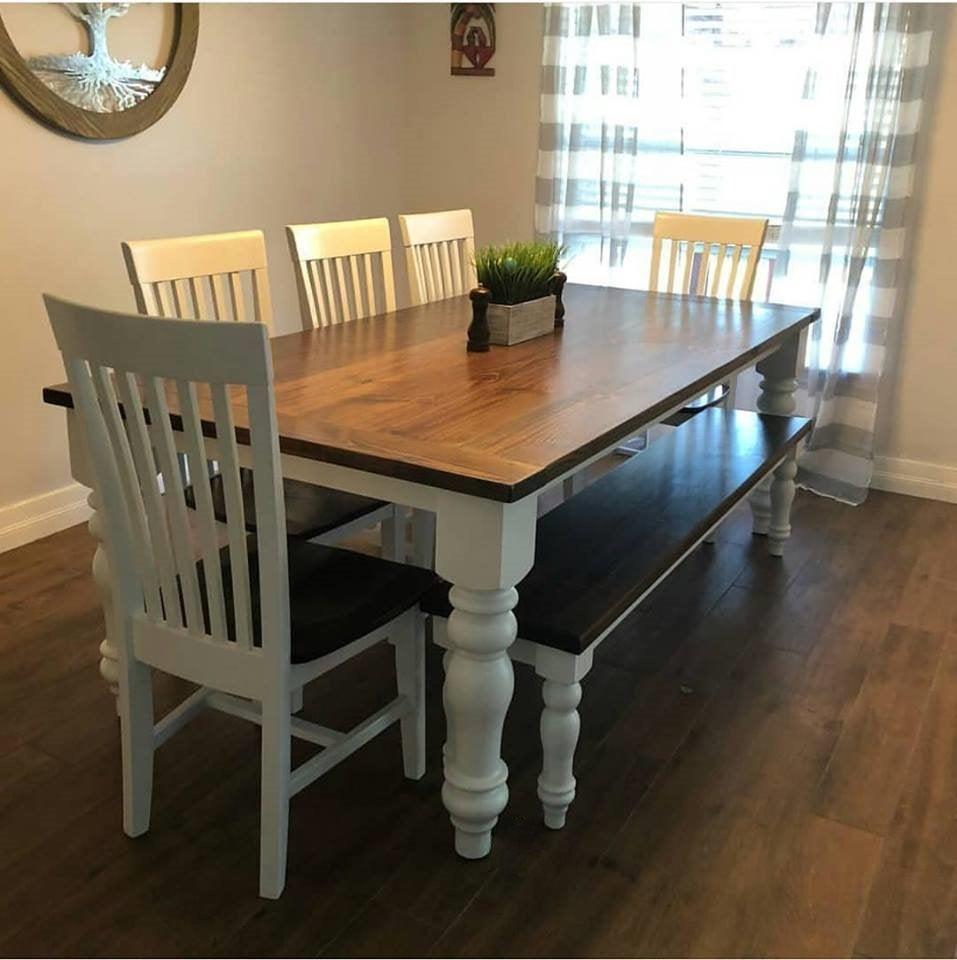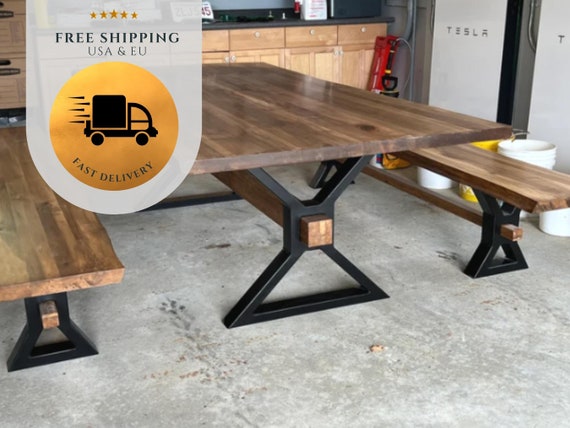Upgrade Your Furniture with Trendy Dining Room Table Legs
Upgrade Your Furniture with Trendy Dining Room Table Legs
Blog Article
Picking the Perfect Dining Table: What Styles Job Best for Your Home?
Picking the perfect dining table for your home can be a nuanced process that balances appearances and functionality. To navigate these selections properly and discover a table that truly complements your home, think about the adhering to aspects in information.
Analyzing Your Space
Assessing the dimensions and design of your eating location is a crucial initial step in selecting the ideal table. Begin by determining the length and width of the area, making up entrances, windows, and various other building attributes that could influence table placement. This makes sure that your table not only fits but likewise permits comfortable activity around it.
Take into consideration the number of individuals you usually captivate. A table should suit your household's everyday needs while offering sufficient versatility for periodic visitors. Generally of thumb, allot a minimum of 24 inches of table size per person to ensure a comfy eating experience.
It's also necessary to preserve appropriate clearance around the table. Ideally, there must go to least 36 inches between the table side and wall surfaces or other furnishings, making it possible for simple gain access to and motion. For spaces where chairs with arms or extra storage devices like buffets are included, boosting this clearance to 48 inches is advisable.
Lights and environment play considerable functions. Guarantee that your dining table aligns with existing lighting fixtures or plan for adequate illumination remedies. This extensive spatial analysis guarantees that your table not just fits physically yet also harmonizes with your room's overall performance and aesthetic.
Popular Table Styles

Conventional table often include elaborate information, curved legs, and abundant wood surfaces, evoking a sense of classic beauty. They are best for homes with classic design or those looking to include a touch of class to their dining area.
Modern dining tables focus on simpleness and clean lines, typically including products like glass and steel. These tables are optimal for modern spaces, providing a sleek and clean look that complements minimal design approaches.
Rustic eating tables, on the other hand, stress natural products and a handmade appearance - dining room table legs. They often include recovered wood and a distressed surface, creating a cozy and welcoming ambience. These tables work well in farmhouse-style homes or those looking for a comfortable, organic feeling
Industrial eating tables integrate raw products such as metal and timber, frequently showcasing a practical aesthetic. This style is fit for lofts or city areas, adding a touch of rugged beauty and durability to the eating experience.
Each style offers unique advantages, making it important to choose one that lines up with your home's general layout and your personal preferences.
Product Choices
When picking a dining table, the selection of product plays an essential duty in determining both the table's aesthetics and capability. Wood, steel, glass, and composite products each offer special benefits and obstacles, making it critical to straighten the product with your home's style and way of life requirements.
Wood is a classic and versatile alternative, readily available in selections such as oak, walnut, and mahogany. Recognized for its resilience and heat, timber matches both conventional and contemporary interiors. It needs normal upkeep to protect against scratches and warping.
Metal tables, often crafted from stainless steel, aluminum, or wrought iron, are praised for their modern charm and effectiveness. They are especially matched for commercial or minimal setups however can be vulnerable to damages and may really feel chilly to the touch.
Glass dining tables bring an air of style and visibility, perfect for smaller areas as they create an illusion of even more room. While simple to clean, glass can be susceptible to spots and requires careful handling to prevent chips and cracks.
Composite materials, such as MDF and plywood, deal cost-effective and customizable services, though they may do not have the longevity of natural materials. Choosing the right material ensures your table is both a useful possession view publisher site and an aesthetic delight.
Shape and Dimension Considerations
After determining the appropriate product for your eating table, the following consideration is selecting the appropriate shape and size to match your room. Alternatively, round tables foster a sense of intimacy and are exceptional for smaller dining areas, urging discussion by eliminating edges and making everyone feel just as consisted of.
Dimension is just as crucial and should be determined by both the area's measurements and the number of individuals you prepare to seat routinely. Generally of thumb, allocate a minimum of 24 inches of table size per individual to guarantee comfortable dining. In addition, think about the table's clearance room: there ought to be at least 36 inches between the table edge and the wall surfaces or other furniture. This ensures that restaurants can move about quickly without really feeling confined. Expanding tables use versatility if you use this link frequently organize larger celebrations, providing added seating when needed without occupying extra space daily. Picking the best shape and size ensures both practicality and aesthetic harmony in your eating location.
Matching Your Decoration
Picking a dining table that balances with your existing design is critical in developing a natural and inviting room. Begin by analyzing your present interior decoration style, whether it be modern, conventional, rustic, or diverse. The eating table ought to match the total aesthetic, not take on it. As an example, a sleek, minimalist table with clean lines is ideal for a contemporary home, while a vintage, luxuriant discover this table matches a much more typical setup.
Color and product are just as significant. If your style features warm tones and natural products, take into consideration a wooden table to improve the natural feeling. Alternatively, a glass or metal table might be better suited in a space dominated by trendy shades and commercial elements. Focus on the coating, as it should mirror other furniture and components to maintain harmony.
Appearance plays an essential duty too. A rough-hewn, redeemed wood table can include personality to a rustic space, while a refined marble surface can raise a glamorous dining area. Finally, consider the scale and percentage of the table in relationship to the area size and existing furnishings. A well-matched dining table not only boosts visual charm yet likewise enriches the total eating experience.

Conclusion
Selecting the optimal eating table necessitates cautious factor to consider of room, design, products, shape, and size. Conventional tables complement traditional interiors with rich wood surfaces, while contemporary tables suit contemporary setups through glass and metal.
Report this page